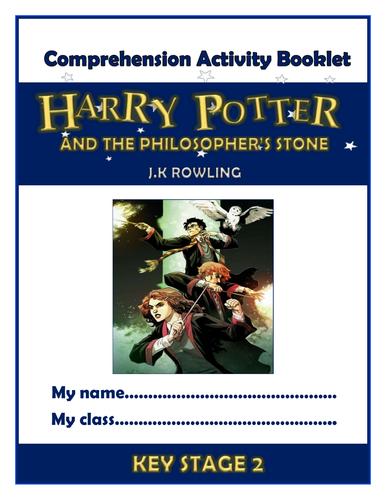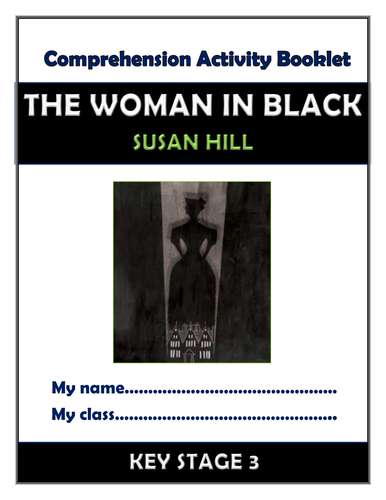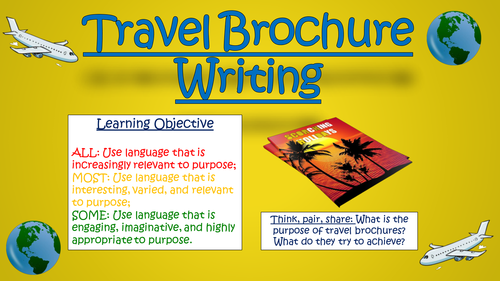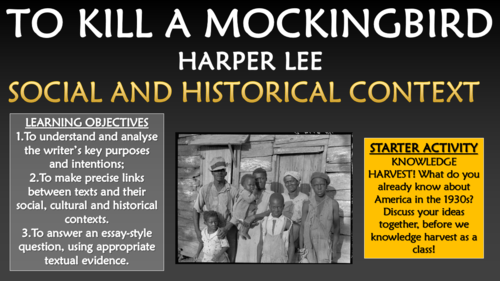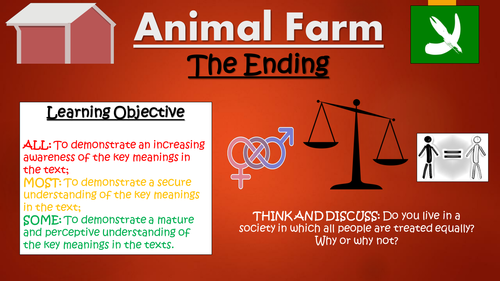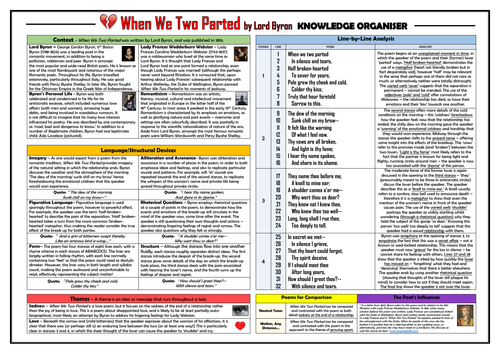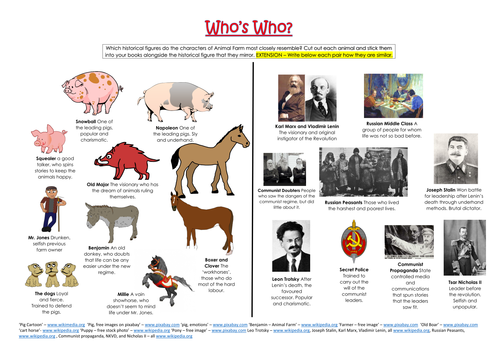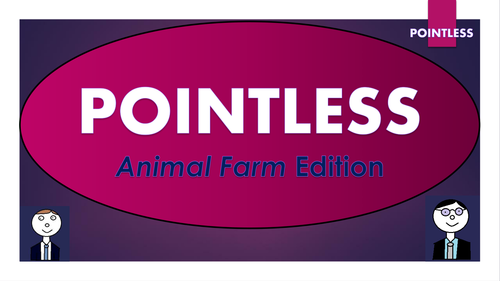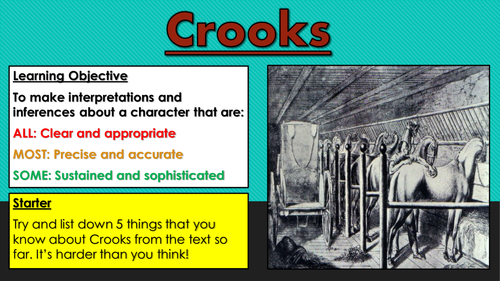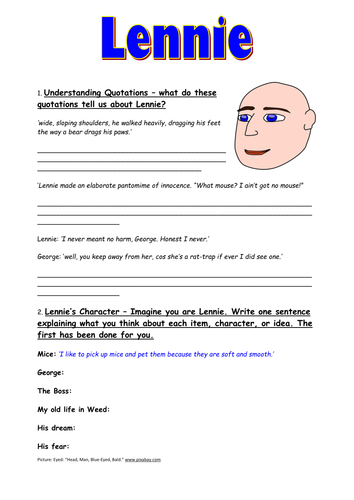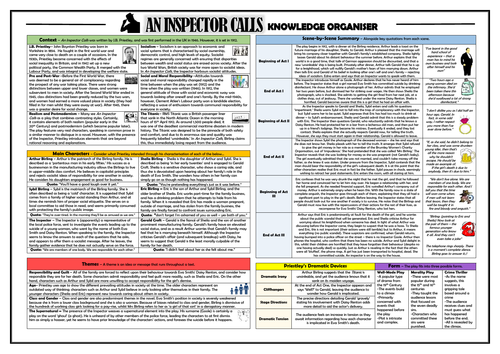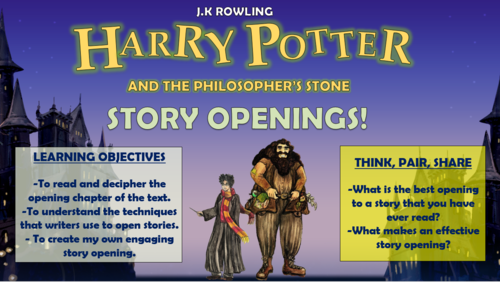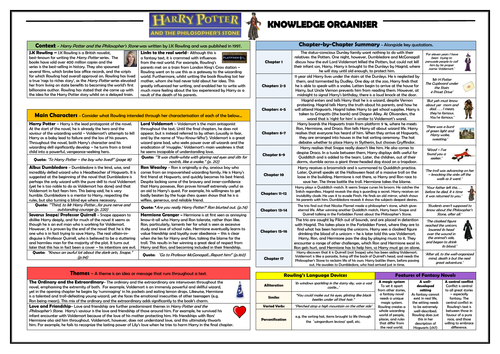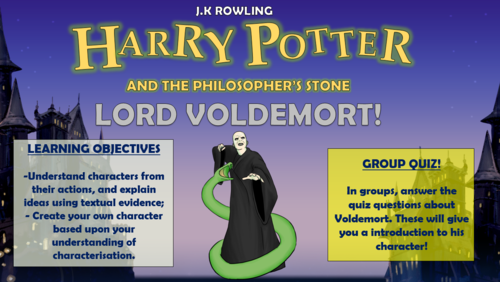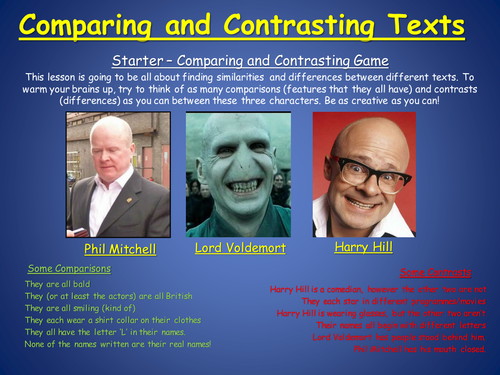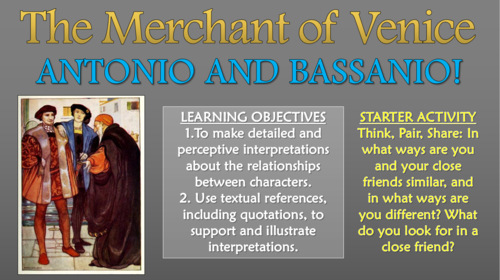
3k+Uploads
1898k+Views
2231k+Downloads
English

Harry Potter and the Philosopher's Stone KS2 Comprehension Activities Booklet!
This resource booklet contains a wide range of age-appropriate, engaging, and meaningful comprehension activities for use throughout the reading of J.K. Rowling's 'Harry Potter and the Philosopher's Stone.' Teachers have found them particularly useful in comprehension or guided reading sessions. They are perfect for aiding the progress of children towards meeting the upper KS2 expectations within the new National Curriculum framework. Children love learning from these resources, whilst they are also of great use to teachers, as there is explicit information within each task regarding which comprehension strands the task is designed to demonstrate. They also relate to key extracts, characters, and themes from the story, ensuring that children gain a deep understanding of the text.
Activities within the booklet include:
- 'An Interview with Dumbledore' - to enable students to demonstrate that they can: 'Understand what is read by drawing on information from more than one paragraph, identifying key details that support the main ideas, and using quotations for illustration;'
- 'Rowling's Description' - to enable students to demonstrate that they can: 'Explain meanings of words that they know and ask the meaning of new words. Link the meaning of new words to words that they already know;'
- 'Severus Snape!' and 'Ron Weasley!' - to enable students to demonstrate that they can: 'Understand what is read by drawing on information from more than one paragraph, identifying key details that support the main ideas, and using quotations for illustration;'
- 'Figurative Language in Harry Potter and the Philosopher's Stone' - to enable students to demonstrate that they can: 'Discuss and evaluate how authors use language, including figurative language, to create an impact on the reader.'
Plus many, many more activities (the booklet is 22 pages in length!) I've also added it as a PDF in case the formatting differs on your computer.
All images are licensed for commercial use, and are cited on a separate document (included).

The Woman in Black - KS3 Comprehension Activities Booklet!
This resource booklet contains a wide range of age-appropriate, engaging, and meaningful comprehension activities for use throughout the reading of Susan Hill's 'The Woman in Black.' Teachers have found them particularly useful in comprehension or guided reading sessions. They are perfect for aiding the progress of children towards meeting the KS3 expectations within the new National Curriculum framework. Children have found these resources extremely engaging, and for teachers there is explicit information within each task regarding which comprehension strands the task is designed to demonstrate. They also relate to key extracts, characters, and themes from the story, ensuring that children gain a deep understanding of the text.
Activities within the booklet include:
- 'Context: The Rural North' - to enable students to demonstrate that they can: 'Know the purpose, audience and context of the writing and drawing on this knowledge to support comprehension.'
- 'Hill's Description - The Horse and Trap' - to enable students to demonstrate that they can: 'Know how language, including figurative language, vocabulary choice, grammar, text structure and organisational features, present meaning.'
- 'Mr Jerome' and 'The Woman in Black' - to enable students to demonstrate that they can: 'Study setting, plot, and characterisation, and the effects of these.'
- 'Vocabulary Inspector' - to enable students to demonstrate that they can: 'Learn new vocabulary, relating it explicitly to known vocabulary and understanding it with the help of context and dictionaries.'
Plus many, many more activities (the booklet is 21 pages in length!) I've also added it as a PDF in case the formatting differs on your computer.
All images are licensed for commercial use, and are cited on a separate document (included).

Travel Brochure Writing!
This engaging and stimulating lesson enables students to create travel brochure texts containing appropriate and imaginative language choices, utilising a range of different language techniques with subtlety in order to craft writing that serves the dual purpose of being descriptive and persuasive. In particular, students learn how descriptive language such as of similes, metaphors, and personification, in addition to persuasive devices such as statistics, rhetorical questions, and personal pronouns, can help to create truly authentic and effective travel brochure pieces.
The lesson follows a clear, logical, bite-size learning journey, which guides students towards differentiated learning objectives. Over the course of this journey, they become able to:
- Define what travel brochures are and understand their purposes;
- Identify the persuasive and descriptive language devices that travel brochure writers employ
- Analyse the effects of the language in a model travel brochure text;
- Utilise a clear and challenging success criteria document in order to construct their own travel brochure pieces;
- Self/Peer assess travel writing attempts.
This resource pack includes:
- A visually engaging whole-lesson PowerPoint presentation;
- An interesting and ambitious travel writing extract (with a highlighted version for teachers):
-A logical and challenging worksheet, encouraging students to analyse key features;
- A detailed lesson plan, complete with what the teacher and students should aim to achieve at each stage of the lesson.
All images are licensed for commercial use, and are cited on the final slide of the PowerPoint.

The Sign of Four Knowledge Organiser/ Revision Mat!
This detailed and visually-appealing resource offers a complete reference point for students learning or revising Arthur Conan Doyle's 'The Sign of Four.' It contains comprehensive sections on:
- Context;
- Chapter by Chapter Summary (with quotes);
- Main Characters;
- Themes;
- Doyle's Language Devices;
- Features of Detective Novels.
Key words and ideas are underlined for easy reference. The resource is designed to be printed onto A3, and is provided as both a PDF and a Word version (so that you can edit if you want to). All images used are licensed for commercial use and are cited on a separate document (included).

To Kill a Mockingbird - Social and Historical Context!
This engaging and informative lesson enables students to make clear, detailed and well-informed links between Harper Lee’s To Kill a Mockingbird and its social and historical context. In particular, students develop their understanding of the 1930s American South, The Great Depression, and racial inequalities, before connecting this understanding with what they read in precisely-selected extracts.
The lesson follows a step-by-step learning journey, in which children learn through:
Creating American South timelines using clearly explained context cards, in order to establish an understanding of context;
Researching further information about the social and historical context of the novel, using a guided research sheet;’
Reading selected extracts from the text, in order to link ideas regarding context and text together;
Analysing how the features of context are portrayed in the novel;
Peer assessing each other’s learning attempts;
Included is:
Whole lesson PowerPoint - colourful and comprehensive;
Timeline Cards
Research Template;
Selected extracts (from chapters 1, 9 and 15);
Essay template
Comprehensive lesson plan.
There are also opportunities for group learning, speaking and listening, peer assessment, and whole class discussion. I originally used these resources with year 10 and 11 classes, however colleagues have used them for between year 8 and year 13 with some adaptations.
Please note that students will need internet access for the research introduction task.
All images are licensed for commercial use, and image rights are listed on the last page of the presentation.

Animal Farm: The Ending (Orwell's Message)
These resources enable students to understand and analyse the significance of the ending in George Orwell’s Animal Farm. More precisely, students learn to make clear and accurate interpretations regarding the increasing inequalities on the farm. Furthermore, students analyse how the final events of the novel help Orwell to get his message across to the reader. It is likely that there are enough resources here to be used over at least two hour-long lessons.
Students learn through the following tasks:
- Gauging and collaborating previous knowledge of 'equality' through a discussion-based starter task;
- Reading chapters 9 and 10 with a particular focus on the increasing inequalities between the different animals, and demonstrating their understanding through a related activity sheet;
- Gauging the inequalities between the animals through the design and explanation of an 'equality graph' (template and instructions provided);
- Understanding how the events of the final chapters help Orwell to get his message across to the reader;
- Analysing how the inequalities between the animals are evident through either a character analysis of Boxer or Napoleon (template and success criteria provided);
- Peer assessing their partners' learning attempts.
The following resources are provided:
- Engaging and colourful step-by-step PowerPoint
- Teacher lesson guidance/plan;
- Equality graph template;
- Two analysis template: Boxer and Napoleon;
- Chapters 9 and 10 worksheet (plus teacher answer sheet);
- Copies of Chapters 9 and 10.
All images and videos are licensed for commercial use, and are cited on the final slide of the PowerPoint.

When We Two Parted Knowledge Organiser/ Revision Mat!
This detailed and visually-appealing resource offers a complete reference point for students learning or revising Lord Byron’s love/relationships poem 'When We Two Parted.’ It contains comprehensive sections on:
Context;
Line-by-Line Analysis;
Poetic Devices/ Language Devices;
Themes;
Form/Structure;
Poems for Comparison;
The Poet’s Influences.
Key words and ideas are underlined for easy reference. The resource is designed to be printed onto A3, and is provided as both a PDF and a Word version (so that you can edit if you want to). All images used are licensed for commercial use and are cited on a separate document (included).

Animal Farm: Old Major's Dream and The Revolution!
These resources enable students to understand and analyse the Old Major’s dream and the events of the animal revolution, in the opening two chapters of George Orwell’s Animal Farm. More precisely, students learn to make clear and accurate interpretations about events and characters, with appropriate links to the Orwell’s allegory and relationship to context.
Students learn through the following tasks:
- Gauging and collaborating previous knowledge through a discussion-based starter task;
- Reading the first two chapters and demonstrating their understanding through a related activity sheet;
- Developing their understanding of characters and context through a a making links activity;
- Analysing the allegorical nature of the opening chapters by further exploring the connections between characters and contexts;
- Peer assessing their partners' learning attempts.
The following resources are provided:
- Engaging and colourful step-by-step PowerPoint (includes links for video)
- Teacher lesson guidance/plan;
- Chapters 1 and 2 worksheet;
- Making Links Activity Sheet (1x more difficult, 1 x easier);
- Copies of Chapters 1 and 2.
All images and videos are licensed for commercial use, and are cited on the final slide of the PowerPoint. Note - internet connection is needed if you plan to use the video.

Animal Farm Pointless Game! (and blank template to create your own games!)
Based on the popular game show 'Pointless', this resource is perfect for use as a whole lesson resource, enrichment option, or revision tool. Editable, so that you can change to any other topic or change questions. (I've also added a blank template so that you can make your own games from scratch). Containing almost 30 slides of sound clips, interesting tasks, and suitably challenging questions, this resource is effective at both promoting engagement and enhancing learning. There are several full rounds of questions to build or revisit knowledge of characters, plot, and themes in 'Animal Farm.'
Round 1. The characters in Animal Farm
Round 2. Quotations from the text
Round 3. Settings and Objects
Round 4. Themes in Animal Farm
The nature of this game ensures that the resource can challenge students of all levels.
A blank template has also been added, so that you can create your own games!

Harry Potter and the Philosopher's Stone KS3 Comprehension Activities Booklet!
This resource booklet contains a wide range of age-appropriate, engaging, and meaningful comprehension activities for use throughout the reading of J.K Rowling's 'Harry Potter and the Philosopher's Stone.' Teachers have found them particularly useful in comprehension or guided reading sessions. They are perfect for aiding the progress of children towards meeting the KS3 expectations within the new National Curriculum framework. Children have found these resources extremely engaging, and for teachers there is explicit information within each task regarding which comprehension strands the task is designed to demonstrate. They also relate to key extracts, characters, and themes from the story, ensuring that children gain a deep understanding of the text.
Activities within the booklet include:
- 'Context: Magic' - to enable students to demonstrate that they can: 'Know the purpose, audience and context of the writing and drawing on this knowledge to support comprehension.'
- 'J.K Rowling's Description of Harry' - to enable students to demonstrate that they can: 'Know how language, including figurative language, vocabulary choice, grammar, text structure and organisational features, present meaning.'
- 'Severus Snape' and 'Ron Weasley' - to enable students to demonstrate that they can: 'Study setting, plot, and characterisation, and the effects of these.'
- 'Vocabulary Inspector' - to enable students to demonstrate that they can: 'Learn new vocabulary, relating it explicitly to known vocabulary and understanding it with the help of context and dictionaries.'
Plus many, many more activities (the booklet is 24 pages in length!) I've also added it as a PDF in case the formatting differs on your computer.
All images are licensed for commercial use, and are cited on a separate document (included).

Of Mice and Men: Characterisation of Crooks
This engaging and informative lesson aims to improve students' knowledge and understanding of the character of Crooks in Steinbeck's Of Mice and Men: His dreams, his loneliness, and how his plight is a product of living in 1930s America. The lesson also aims to improve students' analytical skills, so that they can demonstrate sustained and sophisticated interpretations of the character.
This pack includes the full lesson presentation, with tasks and key information, an extract from the text with close reading questions, a writing to analyse help-sheet, and full teacher guidance. The learning journey is clear and progressive, following a pathway of increasingly more difficult tasks, including:
- An opening task to ascertain what is known about Crooks, and racism in 1930s America
- An extract from the text that highlights some of his characteristics and his loneliness.
- Questions to encourage students to infer and deduce hidden meanings, and understand Steinbeck's message,
- Joint creation of an analysis success criteria;
- An opportunity to answer an exam style question based upon the character of Crooks;
- A chance to peer assess against the success criteria.
All images are licensed for commercial use, and are cited on the final slide of the presentation.
You can choose to buy this resource alone, or as part of the 'Of Mice and Men - All Lessons and Scheme' bundle, which contains seven full lessons, resources, teachers notes, and PowerPoint presentations, plus a Pointless Of Mice and Men game, for just £5!

Of Mice and Men - Characterisation of Lennie
This informative and engaging lesson aims to improve students' knowledge and understanding of the character of Lennie in Steinbeck's Of Mice and Men. It also aims to improve their analytical skills, so that they can demonstrate sustained and sophisticated interpretations of the character.
This pack includes the full lesson presentation, with animations and key information, a worksheet with clear and concise instructions, an example analysis extract, and full teacher guidance. The learning journey is clear and progressive, following a pathway of progressively more difficult tasks, including:
- An engaging memory game task to recognise and remember items and ideas that are related to the character of Lennie;
- A worksheet that enables students to demonstrate understanding of key quotations about Lennie, and to link Lennie to key themes and ideas.
- Close reading of a modelled example analysis paragraph;
- Joint creation of an analysis success criteria;
- An opportunity to answer an exam style question based upon the character of Lennie;
- A chance to peer assess against the success criteria.
Students should have read, (or during this lesson read) up to the section in which George and Lennie meet their new boss, in order to fully access the lesson.
All images are licensed for commercial use, and are cited on the final slide of the presentation.
You can choose to buy this resource alone, or as part of the 'Of Mice and Men - All Lessons and Scheme' bundle, which contains seven full lessons, resources, teachers notes, and PowerPoint presentations, plus a Pointless Of Mice and Men game, for just £5!
-

Of Mice and Men - The Themes of Dreams and Loneliness
This engaging and interesting lesson aims to improve students' knowledge of the main themes (Dreams and Loneliness) in John Steinbeck's Of Mice and Men. It also aims to build their skills in retrieving information from texts, understanding the writer's ideas and opinions, and making precise and confident interpretations about texts.
The lesson uses a range of tasks, that require students to use their visual and interactive skills. It follows this learning journey:
- Understanding what dreams and loneliness are, and how we each experience them;
- Defining themes and understanding how writers use them;
- Understanding how and why themes are used in other famous texts;
- Retrieving evidence from the text to demonstrate where the characters experience dreams and loneliness;
- Analysing how the themes are used to help get across John Steinbeck's ideas about 1930s America;
- Evaluating each others' analytical attempts.
The resource includes a comprehensive and visually engaging PowerPoint presentation, a worksheet for recording the retrieved quotations, a helpful template for the main task, and a lesson plan/ teacher guidance sheet.
All images in this resource are licensed for commercial use, and are cited on the final slide of the lesson presentation.
You can choose to buy this resource alone, or as part of the 'Of Mice and Men - All Lessons and Scheme' bundle, which contains seven full lessons, resources, teachers notes, and PowerPoint presentations, plus a Pointless Of Mice and Men game, for just £5!

An Inspector Calls Knowledge Organiser/ Revision Mat!
This detailed and visually-appealing resource offers a complete reference point for students learning or revising J.B. Priestley's 'An Inspector Calls.' It contains comprehensive sections on:
- Context;
- Scene by Scene Summary (with quotes);
- Main Characters;
- Themes;
- Priestley's Dramatic Devices;
- Features of Form.
Key words and ideas are underlined for easy reference. The resource is designed to be printed onto A3, and is provided as both a PDF and a Word version (so that you can edit if you want to). All images used are licensed for commercial use and are cited on a separate document (included).

Neutral Tones - Thomas Hardy - Knowledge Organiser/ Revision Mat!
This detailed and visually-appealing resource offers a complete reference point for students learning or revising Thomas Hardy’s love/relationships poem 'Neutral Tones.’ It contains comprehensive sections on:
Context;
Line-by-Line Analysis;
Poetic Devices/ Language Devices;
Themes;
Form/Structure;
Poems for Comparison;
The Poet’s Influences.
Key words and ideas are underlined for easy reference. The resource is designed to be printed onto A3, and is provided as both a PDF and a Word version (so that you can edit if you want to). All images used are licensed for commercial use and are cited on a separate document (included).

Harry Potter and the Philosopher's Stone - Story Openings!
This engaging and informative lesson enables students to understand the key techniques used by J.K Rowling in her story opening of 'Harry Potter and the Philosopher’s Stone.' In particular, students comprehend the plot and information in the opening chapter of Harry Potter and analyse what makes the opening effective, before utilising this understanding to compose their own imaginative story opening.
The lesson follows a step-by-step learning journey, in which children learn through:
- Collectively defining the features of effective story openings;
- Reading the opening to Harry Potter and the Philosopher's Stone, identifying the story opening techniques and comprehending the key events and information in the chapter;
- Analysing the effectiveness of each of Rowling's story opening techniques;
- Creating their own engaging story openings, utilising story opening techniques effectively and imaginatively throughout;
- Peer assessing each other's learning attempts.
Included is:
- Whole lesson PowerPoint - colourful and comprehensive;
- The opening chapter of Harry Potter and the Philosopher's Stone (freely available online);
- Effective Story Openings analysis template;
- Teacher answer sheet;
-Comprehensive lesson plan.
All resources are provided in Word (for easy editing) and PDF (to ensure formatting remains fixed between different computers).
There are also opportunities for group learning, speaking and listening, peer assessment, and whole class discussion. I originally used these resources with year 7/8 classes, however colleagues have used them for between years 3 and 10 with some adaptations.
All images are licensed for commercial use, and image rights are listed on the last page of the presentation.

Harry Potter and the Philosopher's Stone Knowledge Organiser/ Revision Mat!
This detailed and visually-appealing resource offers a complete reference point for students learning or revising J.K Rowling's 'Harry Potter and the Philosopher's Stone.' It contains comprehensive sections on:
- Context;
- Chapter by Chapter Summary (with quotes);
- Main Characters;
- Themes;
- Rowling's Language Devices;
- Features of Fantasy Novels.
All key words and ideas are compartmentalised for easy reference. The resource is designed to be printed onto A3, and is provided as both a PDF and a Word version (so that you can edit if you want to). All images used are licensed for commercial use and are cited on a separate document (included).

Harry Potter and the Philosopher's Stone - Lord Voldemort!
This engaging and informative lesson enables students to understand the key features of effective villains, as characterised by Lord Voldemort in J.K Rowling’s 'Harry Potter and the Philosopher’s Stone.' In particular, students highlight key character traits of Voldemort evident in Chapter 17 of Harry Potter and the Philosopher’s Stone (e.g. lack of empathy, hideous appearance, links to the hero, and a clear goal/objective), before utilising this understanding to create and describe their own effective villains.
The lesson follows a step-by-step learning journey, in which children learn through:
- Comprehending Voldemort's role in the novel leading up to the Chapter 17;
- Collectively defining the features of effective villains;
- Reading Chapter 17 of Harry Potter and the Philosopher's Stone, identifying and explaining his characterisation as a villain;
- Analysing the effectiveness of each of Rowling's techniques in creating the image of an effective villain;
- Creating and describing their own imaginative villains, utilising the features of villains effectively and imaginatively throughout;
- Peer assessing each other's learning attempts.
Included is:
- Whole lesson PowerPoint - colourful and comprehensive;
- Paper extract of Chapter 17 of Harry Potter and the Philosopher's Stone (freely available online);
- Lord Voldemort analysis template;
- Create Your Own Villain template;
-Comprehensive lesson plan.
All resources are provided in Word (for easy editing) and PDF (to ensure formatting remains fixed between different computers).
There are also opportunities for group learning, speaking and listening, peer assessment, and whole class discussion. I originally used these resources with year 7/8 classes, however colleagues have used them for between years 3 and 10 with some adaptations.
All images are licensed for commercial use, and image rights are listed on the last page of the presentation.

New GCSE English Language - Comparing and Contrasting
This informative and engaging double lesson aims to improve students’ ability to compare and contrast two different texts based on a similar subject. They will focus particularly on the purpose, audience, language, and structure of texts, and will learn to use comparing and contrasting connectives to highlight any similarities and differences. This has always been a crucial skill in English, but has an increased importance in the new GCSE for English Language, as there is a greater requirement for students to be able to make links and comparisons between texts.
The lesson follows a clear and logical learning journey, with students learning to:
- Understand the key terms 'compare' and 'contrast', and the importance of these skills in English;
- Categorise the different features that they can compare, under the headings 'Purpose', 'Audience', 'Language' and 'Structure;'
- Read (and identify the key features within) two morally and ethically intriguing texts, offering diverse views of young people in the media;
-Compare the two texts, using a clear and concise template, and newly-acquired knowledge of different types of connectives;
- Peer-assess each other's comparative essay attempts.
Included in this resource pack are:
- Whole double lesson, colourful and engaging PowerPoint presentation (Including assessment for learning referral slides)
- Cards for card-sorting activity;
- Two interesting and thought-provoking non-fiction media extracts (one a newspaper extract from The Evening Standard, and another a persuasive leaflet, both focused on the issue of how young people are perceived.)
- Template for main comparative analysis task;
- Full teacher guidance plan.
All images are licensed for commercial use and are cited on the final slide of the PowerPoint presentation

The Merchant of Venice - Antonio and Bassanio!
This engaging and informative lesson enables students to make clear and precise interpretations regarding the relationship between Antonio and Bassanio in Shakespeare’s The Merchant of Venice. In particular, students read and understand Act one scene one of the play, interpreting how Antonio and Bassanio’s relationship is introduced, before tracking how their friendship develops over the course of the play.
The lesson follows a step-by-step learning journey, in which children learn through:
Considering the key components of strong friendships;
Reading Act One Scene One and comprehending how Antonio and Bassanio’s friendship is introduced;
Tracking how their friendship develops over the play, using apt textual evidence;
Considering multiple interpretations of Antonio and Bassanio’s relationship;
Applying their understanding of Antonio and Bassanio’s relationship to create an original composition;
Self assessing their learning attempts;
Included is:
Whole lesson PowerPoint - colourful and comprehensive;
Antonio and Bassanio development worksheet;
Extract - Act One Scene One
Character profile template
Comprehensive lesson plan.
Resources are provided in PDF (to maintain formatting), Word (so that they are easily editable) and also in zipfiles.
The lesson contains opportunities for group learning, speaking and listening, peer assessment, and whole class discussion. I originally used these resources with year 10 and 11 classes, however colleagues have used them for between year 9 and year 13 with some adaptations.
All images are licensed for commercial use, and image rights are listed on the last page of the presentation.

